U-BOAT WAR PATROL
Lawrence Paterson was born in New Zealand and has had a long-time interest in the Kriegsmarine. A keen scuba diver, he has done much research on German World War II wrecks and for some years loved close to the Brest U-boat bunkers. He is the author U-Boat Flotilla and Second U-Boat Flotilla.
U-Boat War Patrol

A Greenhill Book
First published in 2004 by Greenhill Books, Lionel Leventhal Limited
www.greenhillbooks.com
This edition published in 2016 by

Frontline Books
an imprint of Pen & Sword Books Ltd,
47 Church Street, Barnsley, S. Yorkshire, S70 2AS.
For more information on our books, please visit
or write to us at the above address.
Copyright Lawrence Paterson, 2004
ISBN: 978-1-84832-784-9
PDF ISBN: 978-1-47388-462-5
EPUB ISBN: 978-1-47388-461-8
PRC ISBN: 978-1-47388-460-1
All rights reserved. No part of this publication may be reproduced, stored in or introduced into a retrieval system, or transmitted, in any form, or by any means (electronic, mechanical, photocopying, recording or otherwise) without the prior written permission of the publisher. Any person who does any unauthorized act in relation to this publication may be liable to criminal prosecution and civil claims for damages.
CIP data records for this title are available from the British Library
Printed and bound by CPI Group (UK) Ltd, Croydon, CR0 4YY
To Audrey Mumbles Paterson
 Contents
Contents
All times quoted in this book are in German Summer Time (the standard time kept aboard U-boats) unless otherwise noted.
 Preface
Preface
F IFTY-FIVE years after the end of the Second World War in Europe, historys long arm reached out from the distant shadows of long silent battlefields to the most unlikely of places. During April 2000, in a tiny Post Office at Staintondale, on the edge of the Yorkshire Moors, a unique time capsule arrived unexpectedly into the hands of the Post Offices owner Frank James. Twenty black-and-white photographs, some dappled with age, were handed over by a man unsure of their provenance, or indeed of what to do with them. The photographs showed young men aboard a submarine, the national cockade on their caps surmounted by an eagle clutching in its talons the unmistakable swastika symbol of the Third Reich. Obviously it was a U-boat crew, but who they were, and where, remained a mystery to Frank.
With an interest in all aspects of history, but no knowledge of the U-Boat Service, Frank proceeded to research what he could about the random photographs. Aiding him enormously was the fact that most boats carried an unofficial symbol, a distinctive Wappen (emblem, or coat of arms) painted somewhere on the conning tower. In this case it was instantly recognisable a large black cat, tail held proudly upright and back arched over the digits 3X. Although some fourteen U-boats carried cats as part of their Wappen, this must be one of the five U-boats that carried the dreimal schwarze Kater symbol Three Black Cats. In turn it soon became apparent that the photographs were all taken aboard U 564, commanded by the legendary Reinhard Teddy Suhren.
Foster Appleyard, a wartime Royal Navy diver and postwar landlord of a small public house in Bradford, had given Franks visitor the photographs. Although Appleyard had since died, there was more of the collection to be found in the safekeeping of a friend of the deceased diver. On the proviso that they be properly archived and researched, a shoebox full of photographs arrived in Staintondale soon afterwards, bringing the grand total to 361.
It transpired that Appleyard had been part of the extensive team of naval personnel involved during 1944 and 1945 in clearing the massive amount of debris and detritus of battle from the French harbour at Brest, in Brittany. Brest had been one of five French ports taken over in 1940 by the conquering German Wehrmacht with the express purpose of converting them to forward U-boat bases. Stationed in Brest, U 564 had been part of the 1st U-Boat Flotilla, a unit whose Type VIIC boats ranged as far west as the Caribbean Sea in the grim battle of attrition against Allied convoy traffic that stretched between the New World and the Old across the expansive wastes of the North Atlantic.
As the tide of war swung inexorably against the Germans, the beleaguered U-boat service was pushed back until its submarines were fighting running battles against a superior enemy off the coast of France itself. In August 1944 Brest was finally besieged by American soldiers of General Pattons Third Army, racing from the Normandy beaches towards Brittany. A month of savage and costly street fighting against German paratroopers, infantry and naval personnel ended with the citys eventual surrender to the Allies, who then faced the arduous task of evaluating the harbour for possible use as a supply head for advancing Allied forces in France. It soon became apparent that the harbour was useless: not only was it clogged with scuttled and destroyed shipping, but the capture of the deep-water port of Cherbourg and the unexpectedly rapid advance of the Allies towards Germany rendered Brest too far from the front lines and surplus to requirements.
During his work in Brests shattered remains, Appleyard had followed the majority of troops stationed there and explored the cavernous interior of the ports imposing concrete U-boat pens. Within the labyrinthine interior, Appleyard stumbled across the collection of photographs, liberating them and eventually returning to Yorkshire with them in his haversack. Thus, nearly sixty years later, the collection again saw the light of day and was soon on its way to a photographic archive in Gosport, England.
Frank had taken his research as far as he could, and, after enquiries to several U-boat-related museums and archives had yielded nothing, he approached Debbie Corner, Keeper of Photographs at the Royal Navy Submarine Museum in Gosport, home of the Second World War British submarine fleet. Debbie instantly recognised the importance of the photographs, and they were soon housed securely within the Museums collection in pristine blue folders, where they remain still. Despite, obviously, focusing on the Royal Navys own submarine service, the Museum holds a great many U-boat photographs and related records, often overlooked by researchers and writers.
At this point I entered the story. After several years living in France, near Brest, researching the Kriegsmarine and its U-boat service, my wife and I returned to England as I was putting the finishing touches to a book on the history of the 1st U-Boat Flotilla. I soon became involved with the Archive Working Group within the Submarine Museum, my particular role being to assist with all U-boat related material. After organising and beginning to catalogue the huge numbers of U-boat photographs, I turned once again to the Appleyard Collection, and the exceptional study of Suhrens U-boat patrol during the summer of 1942. Many gaps remained in piecing together the story that unfolded with each photograph, and soon it became a full-time research operation in Germany, England and France. This book is the result.
An entire collection that charts the course of a single patrol is a rare find indeed, and U 564s successes and trials provide a unique insight into life aboard the medium-size U-boats. Taken during the summer of 1942 by an onboard war correspondent, the photographs show a U-boat in action within the Atlantic and Caribbean, as the German submarine service teetered on the brink of what was, with hindsight, the unstoppable downward slide into defeat. However, at the stage of the war at which they were taken, U-boats could still spend time surfaced without fear of Allied air attack within the mid-Atlantic and were raking a harvest of considerable numbers of Allied merchant ships.
Next page
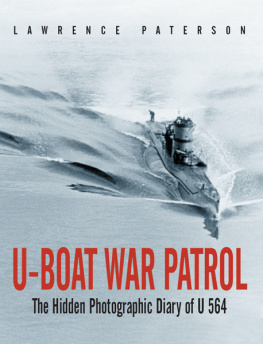
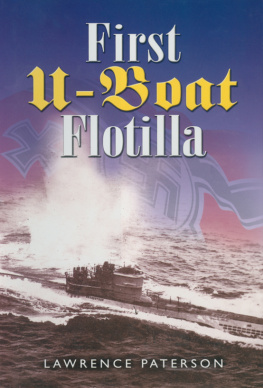
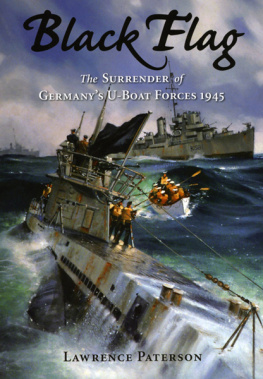



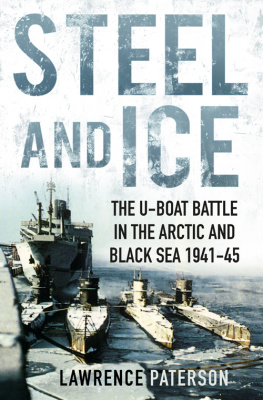
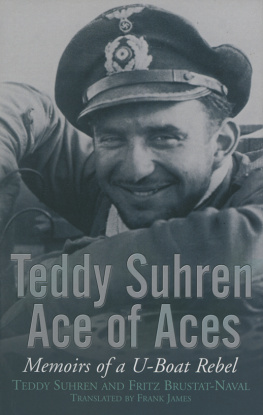
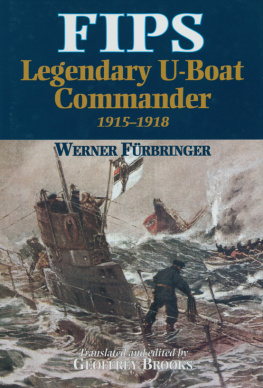
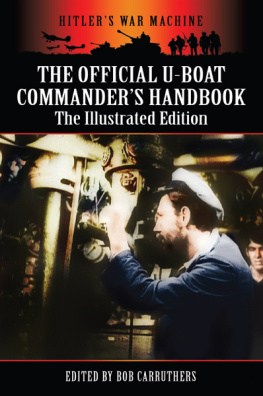
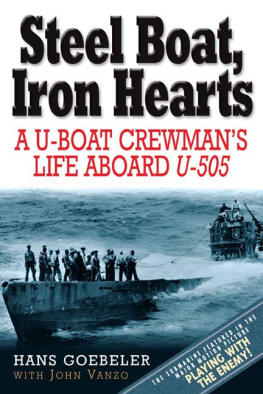
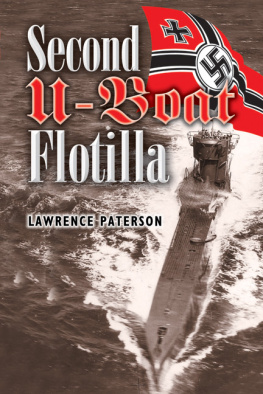
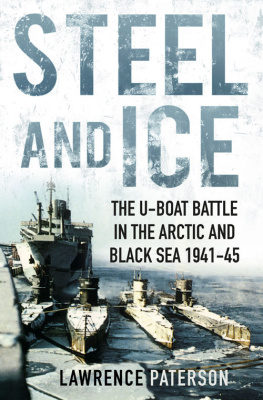
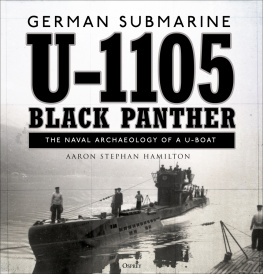

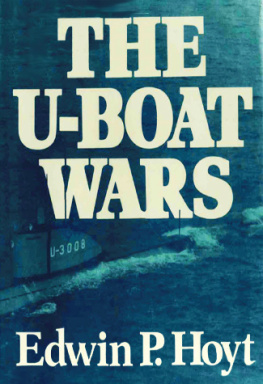



 Contents
Contents